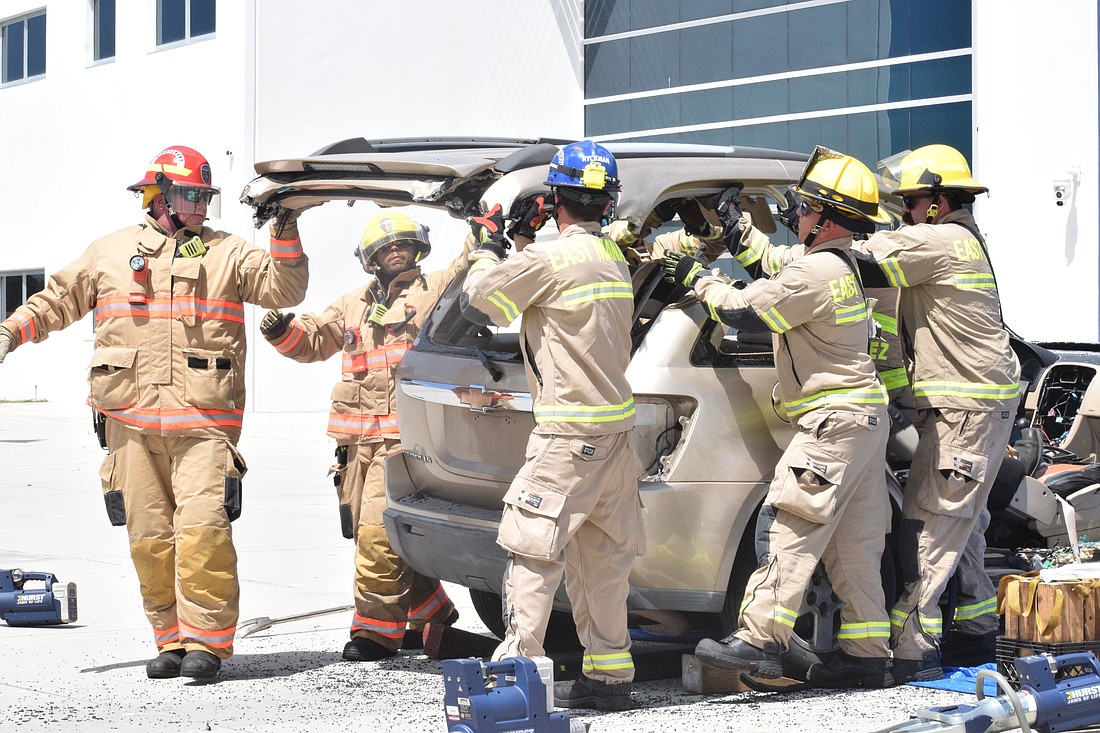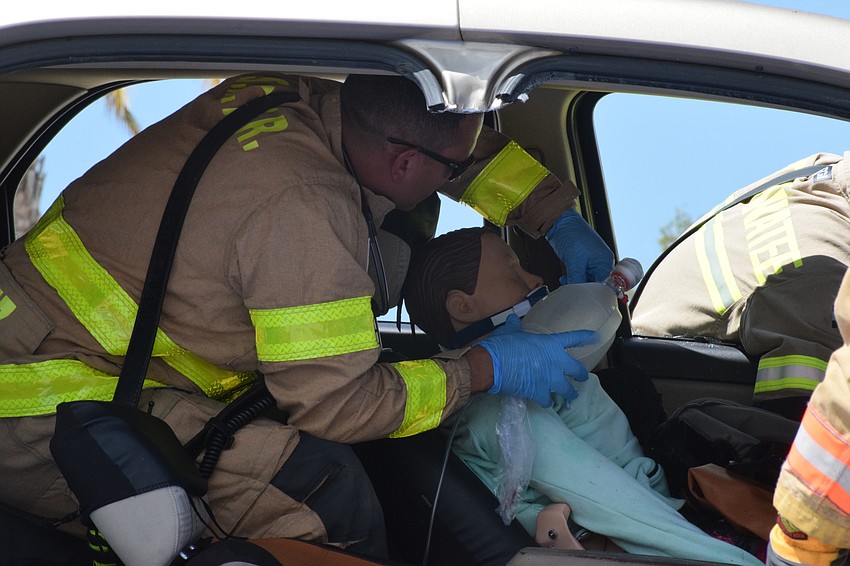- November 5, 2025
-
-
Loading

Lakewood Ranch’s Zack Benshoff listened carefully as he was given tips on where to insert an intraosseous needle into a person’s shoulder.
An intraosseous needle can be used in an emergency situation when the immediate delivery of life-saving fluids or medications is needed and usual intravenous access is not possible.
Before that lesson, Benshoff, a firefighter medic with the North River Fire District, learned some tips on how to work through difficult intubations. That process is used to place a flexible plastic tube into the trachea to provide an open airway.
Benshoff went from station to station during Emergency Medical Services Field Day April 1 at Manatee Technical College. He was getting hands-on experience on methods to help him best serve people in need.
“It’s amazing,” Benshoff said. “It’s very informative and should be a quarterly thing. It’s great to be able to commit these new skills to muscle memory. That’s a big thing for us in our business.”
HCA Florida Blake Hospital, in partnership with seven other EMS and healthcare providers, hosted EMS Field Day to help provide life-saving training to emergency service workers.
“It’s important for us as a trauma center to help provide opportunities for our pre-hospital providers, like our EMTs and crew paramedics, with essential skills they use in the field,” said Megan Hawkins, the trauma injury prevention coordinator and trauma educator for Blake Hospital. “Some of these skills they use on a daily basis. Others are ones they might not see often. It’s important they have the opportunity to practice those.”

EMS providers and EMS students learned about sepsis, difficult intubations, burns, pre-hospital care of a stroke patient, pediatric patient care and more. East Manatee Fire Rescue and Southern Manatee Fire and Rescue worked together to demonstrate extrication and intubation of an entrapped victim in a car.
East Manatee Fire Rescue Lt. Adam Butler was happy to be at the field day to show paramedic and EMT students what it looks like to serve as a first responder.
“One thing we take pride in is how well our fire department and EMS work together,” Butler said. “There are constant trainings like this, and I know those guys are constantly training medically. When we run into a scene, it’s nice to know everybody’s on the same page because we practice it so many times.”
Hawkins said the skills people learned during field day are vital.
He said it is important that when the first responders come upon a situation in the field it won't seem like the first time they have encountered it because they have trained for that moment.
“They’re learning new techniques from people who might have more experience doing these things,” Hawkins said. “It’s knowledge that you don’t always get and opportunities you don’t always see.”
Orlando’s Gaige Harris, who is a student with the First Response Training Group and currently serves as an EMT, said the skills he learned at field day were invaluable.
“This is all kind of out of our scope of practice,” Harris said.
Harris and Orlando’s Nina DeBore, who also is with First Response Training Group, both appreciated the hands-on activities. Harris was amazed by the mannequin that made it feel like he was working on a live patient.

“Being able to touch it and get hands on with it makes a huge difference,” Harris said. “Our book is about 1,500 pages. We read all of the book, but how much of that do you retain? The goal is all of it, but how much do you really retain? Coming in and actually doing the hands-on experience is what teaches you. Being able to actually feel, touch and see what you’re reading about solidifies everything.”
DeBore appreciated learning from experts on various topics and skills.
“I love how they have the stations rotating and you go at your own pace, learning from the best of the best at every table,” she said.
DeBore said the field day was an opportunity for them to practice new skills without judgment and as many times as they want to get it right.
“You should learn and make all of the mistakes while practicing so that way you don’t make those mistakes on a real patient,” she said.
Lucia Fish, the director of burn services at Blake Hospital, and Sarah Edwards, a burn navigator at Blake Hospital, said the field day was an opportunity for them to see what the need is for education regarding burns. They get to meet the people who are first on the scene to help patients before they see them in the burn unit.
“We don’t always get to see EMC, flight crews, things like that,” Edwards said. “It’s nice to put a face to a name and talk to the company because at the end of the day, we all work together to save these patients.”